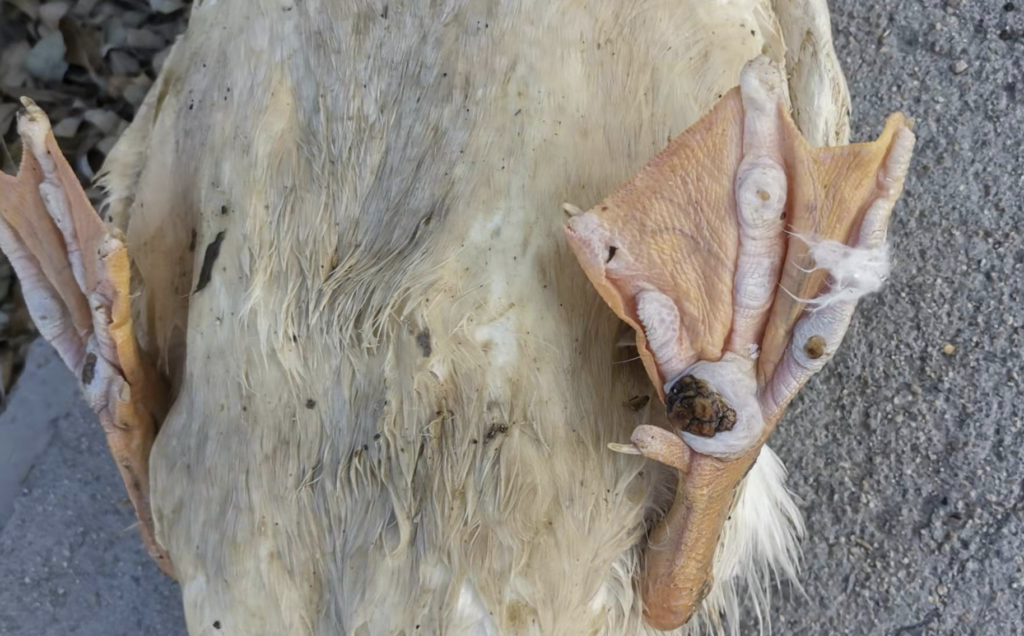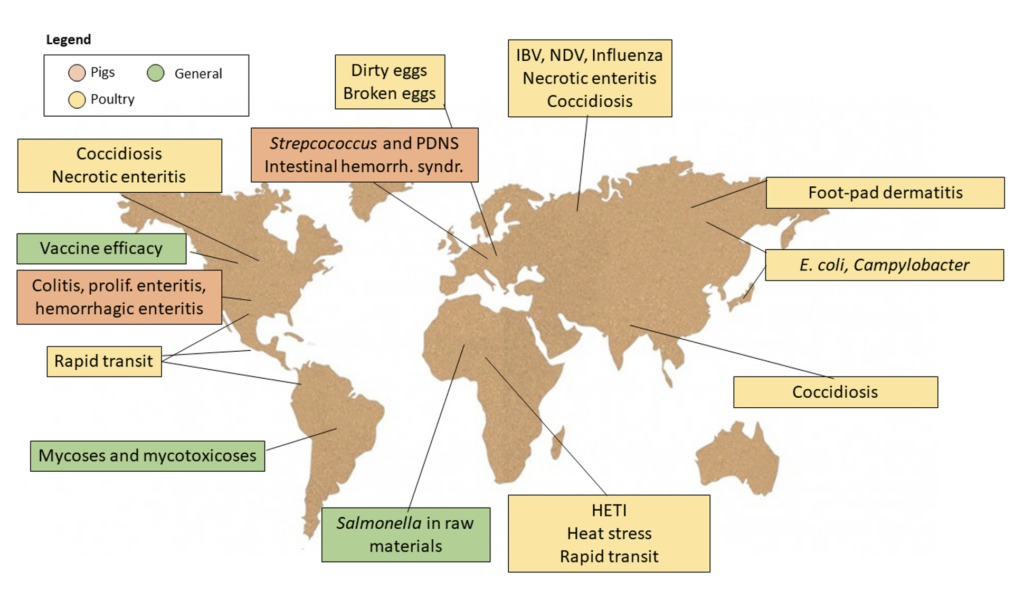
General analysis
Low temperature and high humidity levels start to settle in the Northern hemisphere. The latter promote the growth of fungi in the crops, raw materials, and stored feeds, which makes the monitorization of contamination levels and the implementation of effective prevention techniques essential to maintain health and performance in animals.
There is also a general increase of some viral infections such as the Newcastle disease. Coccidiosis and necrotic enteritis are very frequent, too, because of the high humidity.
On the contrary, in the Southern hemisphere, temperatures continue to rise until summer. Fungi like Penicillium, Aspergillus and Fusarium grow in these conditions and cause problems such as gizzard and digestive mycoses. They also produce mycotoxins like aflatoxins and ochratoxins.
Analysis by geographic areas
In October of 2021, the following issues were described in poultry and pig farms in the different world areas:
· Asia
In East Asia, there is a raising concern about zoonotic bacteria like E. coli and Campylobacter, particularly in layer farms.
In this area, foot-pad dermatitis related with predisposing factors was observed. It was related to high moisture in the litter, poor-quality bed materials and the use of diets with low concentration of biotin.
In South Asia, coccidiosis in breeders at the end of the production period is one of the major issues.
· Russia and Ukraine
Cold fronts have affected the area during the last month and caused an increase in the prevalence of respiratory disorders in poultry farms, such as infectious bronchitis, Newcastle disease and influenza. Besides, the sharp decrease in temperature and high humidity levels made coccidiosis and necrotic enteritis outbreaks more frequent.
· Europe
The percentage of dirty eggs in layer and breeder farms, especially since week 60 of age, was a relevant problem this month. It is related to rapid gut transit and disbalances of the gut flora, which lead to watery feces.
Eggshell problems were reported, too, probably due to poorly formulated diets with low amounts of available calcium, phosphorus, and other minerals and an unoptimized calcium absorption and metabolism.
Streptococcus caused secondary infections in pigs affected by the porcine dermatitis and nephropathy syndrome, a vertically transmitted disease that causes immunosuppression. Hemorrhagic intestinal syndrome is a concerning problem as well that is related to disbalances of the gut flora that affects pigs at the end of the fattening period and causes sudden death.
· USA
The season with the highest prevalence of coccidiosis and necrotic enteritis starts, which are related since coccidiosis is a predisposing factor for necrotic enteritis.
Cocci vaccines are a broadly used prevention mechanism in US poultry farms; however, in the moths with highest humidity, outbreaks continue to occur despite vaccination. That is why there is an interest towards finding tools that complement vaccination to obtain a greatest protection.
Low temperatures lead to immunosuppression and, consequently, vaccination failure. That is why farmers look for ways to improve the efficacy of vaccines against viral diseases (Newcastle disease, Marek’s disease and Gumboro diseases in poultry, and porcine epidemic diarrhea in pigs).
· Latin America
In layers, dysbacteriosis and rapid intestinal transit are in the agenda, and they increase the percentage of dirty eggs.
Colitis associated to Brachyspira and proliferative enteritis associated to Lawsonia intracellularis are two highly prevalent diseases in pig farms in North and Central America. They have severe economic consequences as the affected animals are pigs at the latter stages of the fattening period.
Lastly, pig producers look for mechanisms to prevent the hemorrhagic intestinal syndrome intended to control the balance of the gut flora and prevent the overgrowth of enterobacteria and clostridia.
· Africa
Rapid transit is a problem in broiler farms as it increases litter moisture, making foot-pad dermatitis and coccidiosis more frequent and increasing ammonia production.
Besides, chicks suffer the consequences of toxic infectious hepatoenteritis (HETI) in the first week of life, which include high mortality rates after the first week and lower weights at the end of the production period.
Heat stress is also present in some areas of the continent, causing an increase in prevalence of broken eggs and bone problems in poultry, such as cage fatigue syndrome (layers) and the breaking of the femoral head (broilers).
The quality of raw materials and their role as a source of infection worries producers and nutritionists because they are contaminated with Salmonella, particularly soybean oil.
